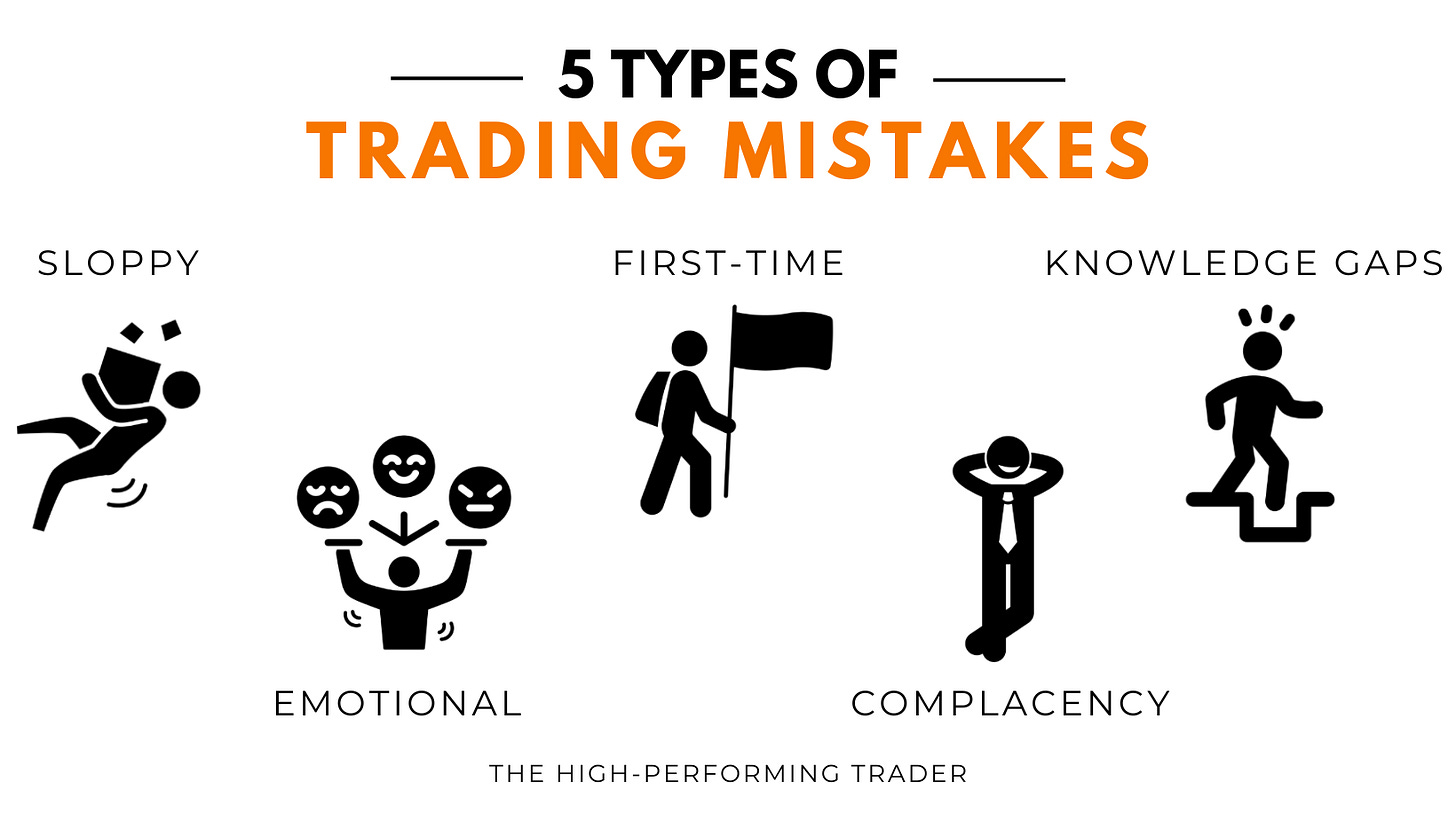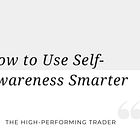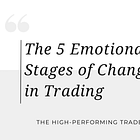Thursday Trader's Tip: The 5 Types of Trading Mistakes
The Thursday Trader's Tip offers quick, to-the-point trading psychology advice digestible in 5 minutes.
Watch this week’s video at the end of the post.
Not all trading mistakes carry the same weight, yet I see traders putting them all into the same box of self-blame.
Some mistakes are unavoidable and part of the learning curve, while others are repetitive and harder to mitigate.
Categorizing your trading mistakes helps you exit the self-blame cycle and start accepting imperfection. And this acceptance is the condition for real progress.
Trading mistakes can be categorized into five types:
Let’s go over each one:
#1 Sloppy Mistakes
These are mistakes caused by external interference or low focus capacity.
Example: Being distracted by noise, external traders, or notifications during trading.
Here are some actions steps to overcome this type of mistakes:
Create a distraction-free trading environment.
Establish a pre-trading focus routine (e.g., mindfulness or breathing exercises).
If you won’t be able to trade distraction-free, opt for skipping the trading session.
#2 Emotional Mistakes
These are impulsive decisions driven by fear, greed, frustration, or overconfidence. They usually stem from deeply ingrained beliefs and tend to be repetitive because of that.
Example: Exiting a winning trade too early out of fear or revenge trading after a loss.
These are the types of mistakes traders approach me for help as they require deeper work compared to the other types.
Nonetheless, here are some starting steps for you:
Get to know yourself and what drives you.
Strengthen your impulse control neuropathways (I discussed how in this post).
Replace old beliefs with productive ones (which not only implies deep self-awareness but, most importantly, self-acceptance.)
#3 First-Time Mistakes
These are unavoidable mistakes that occur when facing new situations or adapting to changes.
An example of this is mismanaging risk when trading in a different market environment.
Action steps for you to address these unavoidable mistakes:
Treat first-time mistakes as learning opportunities. There’s nothing to beat yourself up to when these mistakes happen!
Document the mistake and develop action plans to address it right away.
Pay close attention to these mistakes—they're the warning signs before big losses happen. Treat them as opportunities to prevent bigger problems down the road.
#4 Complacency Mistakes
These are errors caused by neglecting preparation. I see this with lots of traders after having a great week or month.
Example: Skipping market reviews and missing critical setups.
Action Steps:
Build a consistent daily routine (e.g., pre-market prep, post-trade journaling) and be loyal to it! Also, understand what truly works for you and give it the right attention or else you’ll end up neglecting it.
Set accountability measures (e.g., tracking adherence to the routine).
If you’re in a self-sabotaging cycle of giving profits back to the market, making mistakes after a very good day or week, understand it might be related to fear of success.
#5 Knowledge Gap Mistakes
Mistakes stem from a lack of understanding or incomplete information.
Example: Misinterpreting economic data or a new headline.
Action Steps:
Raise awareness to recognize the gap in the first place.
Create a resource list for quick reference during trading.
Double-check all assumptions and seek clarification when unsure.
Two Ways of Making a Mistake
There are two ways you can execute any of these types of trading mistakes:
Under Awareness
Without Awareness
The most common? Mistakes made under awareness.
“Despite having the awareness, something else takes over my actions.” — traders say.
Here’s a quick guide for you:
If you only become aware of the mistake after the fact, your project is to work on raising your self-awareness. You’ll benefit from externalizing your thought process during the session by journaling (preferably manually, as it’s prone to have better benefits than digital writing).
If you are aware while making the mistake but struggle to interrupt yourself, you need to practice self-acceptance and impulse control, which is done by reinforcing your “no-go” brain function.
Categorizing the different mistakes helps you better process and understand the underlying driver, which makes you progress faster and better!
Your performance coach,
Sara
P.S. If you took value, I’d appreciate it if you tap the ❤️ button.
Ready to commit to becoming your best trader self? Try the paid plan:
Don't miss out on this week's edition in video format:





